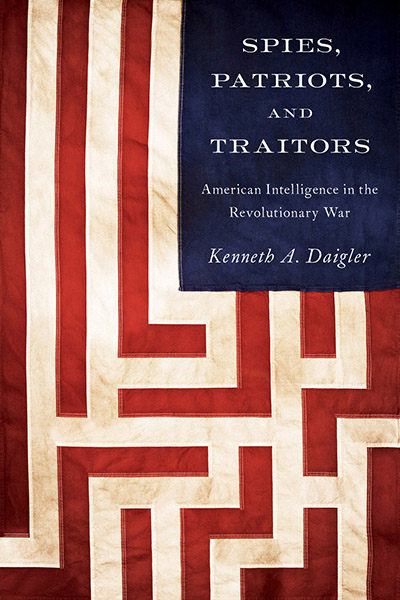 Spies, Patriots, and Traitors
Spies, Patriots, and Traitors
American Intelligence in the Revolutionary War
By Kenneth A. Daigler. 317 pages.
Georgetown, 2014. $29.95
VETERAN OF MORE THAN 30 YEARS in the CIA, Kenneth A. Daigler writes like a case officer reporting from a time machine that took him back to the American Revolution. There he finds Nathan Hale, America’s first martyred spy, whose statue stands outside CIA headquarters today. After noting that Hale was a Yale graduate, like many of the agency’s early operatives, Daigler analyzes what happened after General George Washington sent Hale out to spy on the British. “In a professionally planned mission,” Daigler writes, “all aspects of Hale’s cover plan, collection requirements, methods of recording his information, and detailed escape plan would have been thoroughly reviewed with him.” None of this CIA-style preparation occurred, and so Hale was captured and hanged because he had been doomed by “a botched mission.”
Most Americans see the revolution as a war for independence, but Daigler, who was a senior case officer in the CIA’s Clandestine Service, uses the lexicon of a modern intelligence officer to describe the revolution as “an insurgency against an established government by a force that, at best, had the active support of only about a third of the population.” Spies, Patriots, and Traitors describes the espionage war within that insurgency with a cool detachment. Daigler tells the story without the suspenseful narratives usually found in nonfiction accounts of espionage. Instead, he is a meticulous researcher, making good use of the relatively scarce documents on Revolutionary War espionage and combining that with his knowledge of modern espionage. He looks at the treachery of Benedict Arnold, for example, from the viewpoint of Arnold’s case officer, Major John André. André was caught and hanged, Daigler believes, because of his “poor judgment” and “lack of basic intelligence professionalism.” In contrast, Daigler hails George Washington as “a talented, innovative, aggressive, and quite competent intelligence manager” in his handling of the Culpeper Ring, his most successful operation. Members of the ring skillfully produced important intelligence gleaned in British–occupied New York and exhibited the “operational security discipline” that ultimately thwarted Benedict Arnold in his pre-defection quest for the identity of American agents he hoped to pass on to the British.
Daigler also includes a glossary of trade-craft terms, such as agent of influence and penetration agent, and provides a helpful timeline that adds espionage activities to key conventional Revolutionary War events.
Thomas B. Allen’s books include Declassified: 50 Top-Secret Documents That Changed History.


.jpg)



